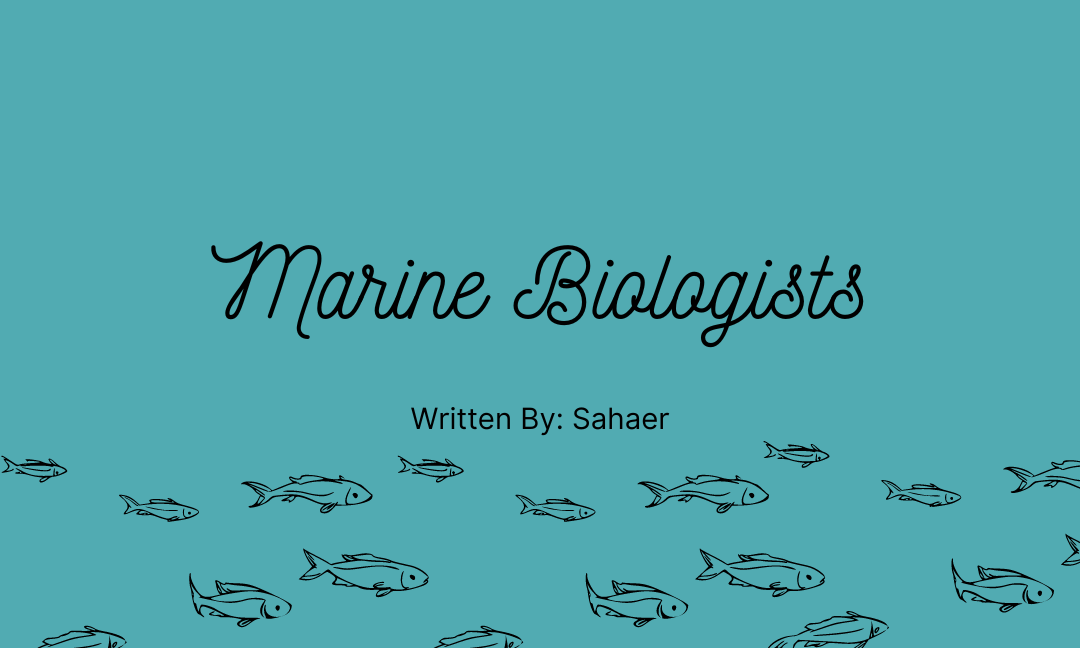Written by: Sahaer Noor
Edited by: Colleen H.
Designed by: Jiya Mehta
Published by: Maryam Khan
Assume you’re at your lab bench, peering through magnifying glasses at a small invertebrate in a specimen dish. You are a marine biologist who discovered a mollusc while diving in a shallow bay off Vancouver Island’s coast.
This species of mollusk is remarkable because its natural habitat is hundreds of kilometres south of this bay, where ocean temperatures are significantly warmer.
You’ve been studying this mollusc species for ten months, taking dozens of dives and putting in countless hours in the lab to support your hypothesis that warmer ocean temperatures caused by climate change are altering the distribution of this mollusc species.
You know everything there is to know about the aquatic organisms and fluid environment of this particular bay. You were surprised to find this mollusk species so far north and applied for a grant to investigate how and why it arrived on Vancouver Island.
You’ve proposed that climate change has resulted in warmer ocean temperatures in this region, allowing the mollusk to expand its habitat.
Much of your research has concentrated on gathering data and mapping trends to determine whether local ocean temperatures have changed significantly in recent years, to the point where the coasts of Vancouver Island have become a usable habitat for species found further south.
During your dives, you collect information about the distribution and abundance of mollusks in the bay, as well as specimens to take back to the lab. You study the morphology of your specimens as well as the water temperature, looking for physiological adaptations that would allow them to survive in colder waters.
Your research, once published, will add to the body of scientific knowledge that records and predicts the effects of climate change on global ecosystems.
While job duties vary greatly between positions, marine biologists are frequently asked to perform the following tasks:
- Investigate the behavior, evolution, distribution, and relationships of organisms in a marine setting.
- Measure the physical and chemical properties of water using electronics and other instruments.
- Investigate the diversity of benthic and pelagic organisms.
- Investigate the structure of marine communities and aid in the restoration of damaged ecosystems.
- Collect marine organism samples and conduct laboratory tests with equipment such as electron microscopes.
- Create mathematical models to estimate the abundance and distribution of marine life in specific locations.
- Assess the environmental impact of projects that may have an impact on both marine life and humans.
- Prepare reports and recommendations for governmental and non-governmental organizations.
- Develop and implement long-term programs for monitoring environmental pollution, including protocol development and environmental compliance monitoring.
- Keep an eye on marine species populations and those who have been exposed to contaminated sites.
- Help with fisheries management
- Prepare grant applications to fund research.
- Interact with students and the general public to educate and discuss marine issues.
If you want to be a Marine Biologist, you should be passionate about the following topics:
- Biology
- Chemistry
- Physics
- Mathematics
- English for Computer Science
In most cases, a university undergraduate degree is the minimum educational requirement. Independent research necessitates a graduate degree.
If you are a post-secondary student interested in a career as a marine biologist, the following programs are ideal for you:
- Biological Sciences of the Sea
- Veterinary Science
- Ecology
- Marine Biology
- Oceanography
- Geology
- Botany
- Zoology
- Science of the Environment
As a marine biologist, you raise awareness of the marine environment and investigate how changes like global warming, overfishing, and pollution will impact marine environment.
Observing the positive and negative effects of humans on marine life is part of this role. This includes the introduction of plastics into the oceans, which endangers animals, as well as how oil spills displace marine species and reduce their chances of survival.
We’re starting to see how specific occupations can be interwoven in so many different fields of study, and a marine biologist is no exception.
Marine biology is a field that requires the knowledge of mathematicians, economists, biological technicians, microbiologists, and even sociologists to better understand the relationship between the oceans, species, and humans.
The work of marine biologists assisted the cod population in transitioning from endangered to vulnerable but no longer in imminent danger.
Marine biologists contribute significantly to conservation efforts through their research and expertise on marine life, as well as collaboration with people from other fields such as policymakers and social scientists. Their work could include advising governments on where and when to set quotas that allow humans to make a living while not jeopardizing aquatic ecosystems.
Sources:
- https://eco.ca/career-profiles/marine-biologist/
- https://www.environmentalscience.org/career/marine-biologist
- https://ca.indeed.com/career-advice/finding-a-job/how-to-become-a-marine-biologist
- https://www.jobbank.gc.ca/marketreport/summary-occupation/2618/ca;jsessionid=042608CADAE04A9E0F979A6E241816C5.jobsearch74
- https://www.dal.ca/academics/programs/undergraduate/marinebio.html
- https://www.prospects.ac.uk/job-profiles/marine-biologist

